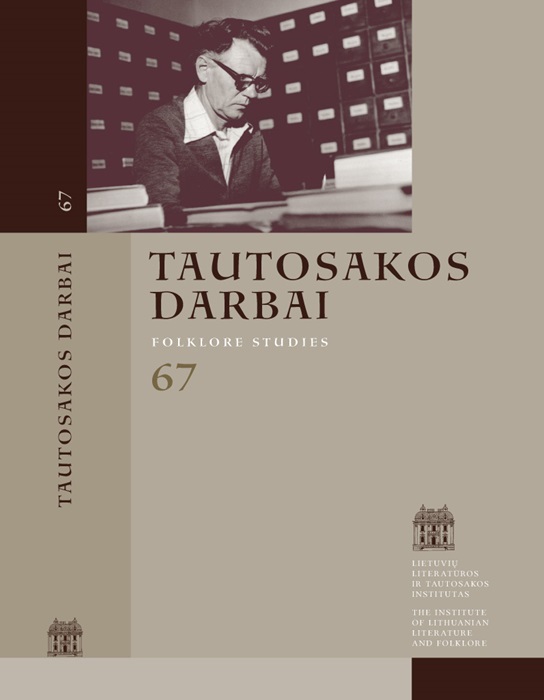The Interconnections of the Melodies of Vilnius Christian Church Hymns: from the First Influences in the 17th Century to the 21st Century
Abstract
The article discusses seven melodies of the Christian Orthodox church hymns, which have counterparts in Uniate, Catholic and Protestant church music since the first influences in the 17th century until the 21st century. The Lithuanian Orthodox, Catholic, Uniate and Protestant church singing has been widely researched; the author has discussed the parallels between Orthodox and Uniate singing in her previous publications, yet paleographic data of the musical text of the Uniate and Orthodox hymnals (irmologions) dating from the 17th–18th centuries allows supplementing and clarifying the data regarding “Vilnius” Uniate and Orthodox hymns of the 17th–18th centuries as well as presenting transcriptions of the melodies carried out by the author. Correspondences between the Orthodox church melodies of the 18th–21st centuries in the Catholic and Protestant church singing in Lithuania have never been studied. The comparative analysis of the melodies of the Christian church hymns from Vilnius reveals that the related Orthodox and Uniate and Orthodox and Catholic melodies were connected by the common historical sources, namely, the “Greek” and “Bulgarian” melodies of the post-Byzantine singing style that was common on the territory of the Grand Duchy of Lithuania in the 17th–18th centuries, while current interconnections between the Vilnius Protestant and Orthodox church singing are reflected in the church music created by composers.

This work is licensed under a Creative Commons Attribution 4.0 International License.
Downloads
Most read articles in this journal
- Diana Plachovičiūtė, The Image of Geese in Lithuanian Phraseology , Tautosakos darbai: Vol. 67 (2024): Tautosakos darbai
- Aušra Žičkienė, Reviving Songs from Panemunė , Tautosakos darbai: Vol. 65 (2023): Tautosakos darbai
- Dalia Zaikauskienė, Interpretation of Proverb Meaning: Theory and Practice , Tautosakos darbai: Vol. 62 (2021)
- Jurga Sivickaitė-Sadauskienė, Letters of the Repressed: the Literary Nature of the Bronius Sivickas’ Letters from Mordovia , Tautosakos darbai: Vol. 65 (2023): Tautosakos darbai
- Vita Džekčioriūtė-Medeišienė, Mythical Notion of Mushrooms in Lithuanian Culture , Tautosakos darbai: Vol. 52 (2016)
- Gerald Porter, Metals and Their Workers: Our Thundering Cannon , Tautosakos darbai: Vol. 59 (2020)
- Dalia Blažulionytė, „Žalios girios medeliai – mano brolužėliai“: žmogaus ir miško ryšys Lietuvoje , Tautosakos darbai: Vol. 66 (2023): Tautosakos darbai
- Modesta Čaplikaitė, Folk Cosmetics or the Search for Beauty in the Lives of Women from Merkinė (Attempt at an Ethnological Research) , Tautosakos darbai: Vol. 57 (2019)
- Jūratė Šlekonytė, The Folktale Narrator at the Turn of the 20th – 21st Century: the Case of Antanina Čaplikienė from Subartonys , Tautosakos darbai: Vol. 64 (2022)
- Vilma Daugirdaitė, Editorial Board and Table of Contents , Tautosakos darbai: Vol. 65 (2023): Tautosakos darbai




